There can be your advertisement
300x150
Eco-Friendly Interior Design
Together with an expert, we explore how to create an eco-friendly interior not only from a style perspective but also from the standpoint of materials, recyclability, and the impact of production on the environment
Responsible consumption and ecology are among the key themes of recent years. More and more people are giving up plastic bags in supermarkets, sorting waste, and donating unwanted clothing for recycling, and this trend will continue to grow in 2020. Global warming, air pollution, or the amount of plastic in the oceans that soon may equal the number of fish—these are all increasingly affecting our lives, making it harder to ignore them. In interior design, the eco-friendly approach is also gaining momentum. What does it involve? Veronica Marfina, a designer, tells us.
Veronica Marfina - Expert - Interior Designer and Sustainability Specialist. Graduated from the Sustainable Design program at Kingston University in London.
What is eco-friendly design?
How often do we consider ecology when decorating an interior? Yet furniture made from particle board (DSP), for example, not only can emit harmful substances for health but is also practically impossible to recycle and use in manufacturing new products. PVC, used for window frames, flooring, and electrical cables, also cannot be recycled—by the way, its use is already being restricted in some countries due to toxicity.
Good news: more and more high-quality, beautiful, and environmentally safer materials are appearing on the market—from glass tile made from recycled glass to wallpapers made from paper production waste and lighting fixtures made from reclaimed wood. So alternatives exist, and the higher the demand, the more solutions the market will offer.
But eco-friendly design is not just about eco-materials. When creating a space, the environmental impact of all its elements is considered, solutions for reducing waste and saving energy and natural resources are implemented. For every interior item, it's important to analyze how and where it was made, how long it will last, how easy it is to maintain, how quickly its design becomes outdated, and whether it can be recycled.
 Design: Gafa Architects
Design: Gafa ArchitectsWhat is the most eco-friendly style?
Eco-friendly design is sometimes confused with interior styles, although eco-solutions can be applied regardless of the chosen style. If you visit Stella McCartney’s store in London, its design won’t tell you that thanks to technologically advanced solutions the air inside is much cleaner than outdoors, some walls use recycled office paper, and furniture is made from reclaimed wood or vintage pieces.
If you were to pick a specific style, minimalism is most compatible with an eco-friendly approach, characterized by the elimination of anything unnecessary—decoration, furniture, and finishing. The fewer items there are, the less natural resources, CO2 in the atmosphere, and landfill waste. The Scandinavian style also fits this concept—its minimalist approach to decoration and use of long-lasting items with timeless designs.
 Design: Ruetemple
Design: Ruetemple5 Characteristics of Eco-Friendly Interior
Eco-Friendly and Safe Materials
Natural materials like wood, wool, or stone seem like an obvious choice when considering eco-friendly interiors. However, the environmental impact of a product is evaluated based on its entire lifecycle—from extraction and production to transportation and disposal. Therefore, synthetic floor covering produced in your region from plastic waste might be more eco-friendly than solid wood parquet made from rare timber species that grow on the other side of the world.
If you want to use natural materials, choose those that regenerate quickly, such as fast-growing bamboo or cork. It's important that they are harvested responsibly. For wood, this approach is guaranteed by the FSC label on products, indicating trees were not cut down entirely but selectively, preserving the forest ecosystem and biodiversity.
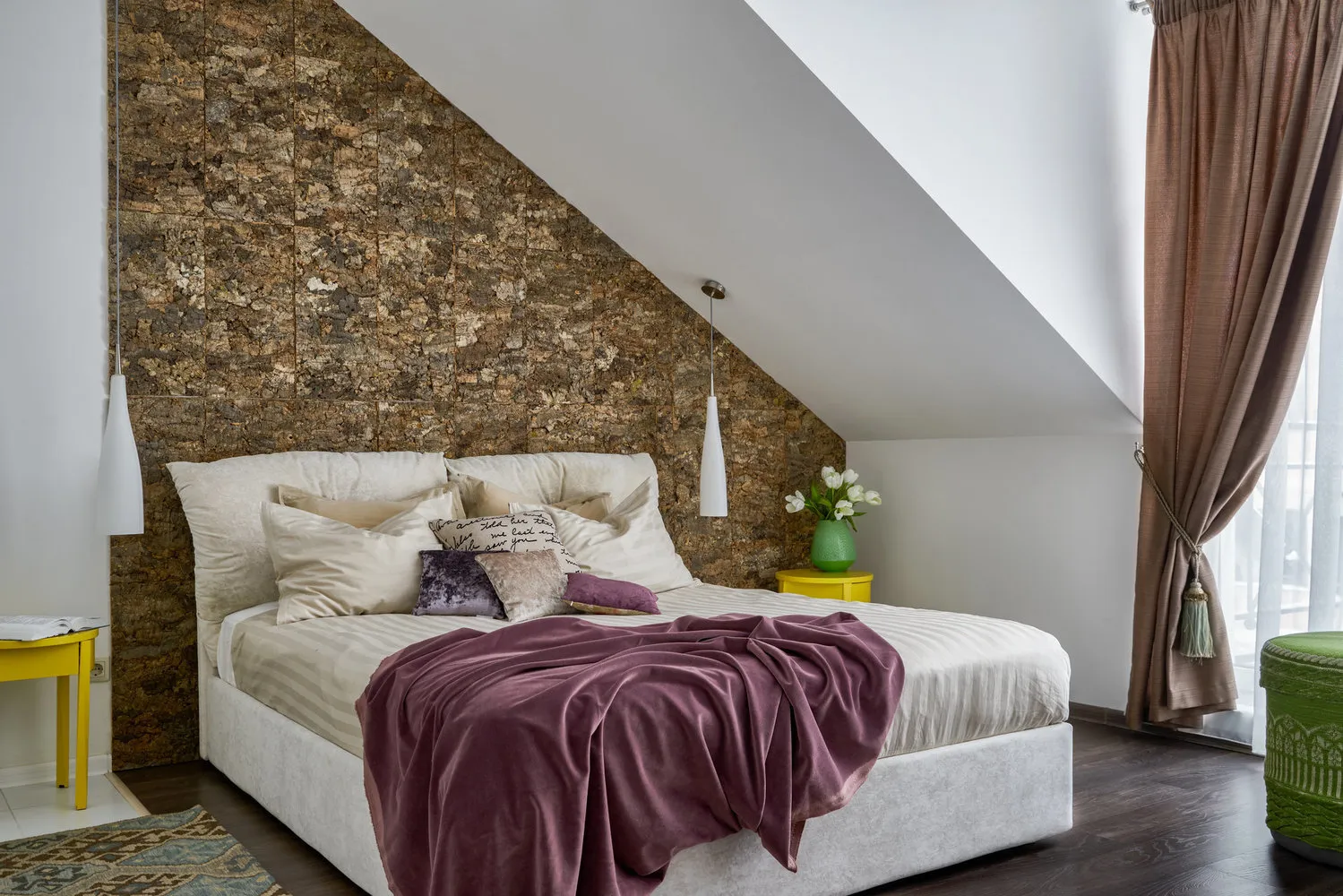 Design: Oksana Tsybalova
Design: Oksana TsybalovaMaterials must be safe for humans—containing minimal levels of toxic substances emitted into the air. For particle board (DSP), this can be guaranteed by European evaluation systems, where a product marked E1 is considered safe for use in residential spaces. Among paints, the most eco-friendly and safe are those made from plant-based raw materials on water-based systems with zero volatile organic compound (VOC) emissions, which can be harmful to humans.
 Design: Olga Chernenkova
Design: Olga ChernenkovaSecond Life for Items
Mindful consumption, including maximizing the potential of already produced items (reuse, recycle, upcycle), is becoming a popular concept in all areas of life. More and more people understand that natural resources are limited, and it's better not to waste them on producing new items when existing ones can be reused.
Interior items can also be given a new life: vintage fabric from grandmother’s attic can become the new upholstery for an old chair, wooden planks can serve as a dining table top, and a glass bottle can make a great vase. Items that are completely worn out can be sold; there is no longer a place for them in landfills.
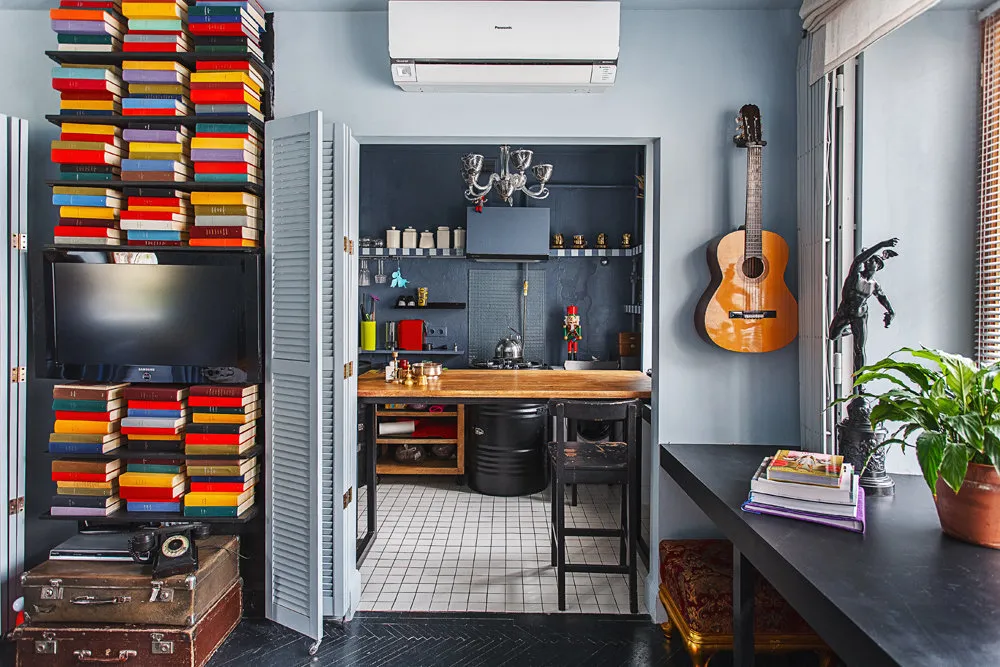 Design: Natalia Anahina
Design: Natalia AnahinaPro Tip: If you don’t want to engage in crafts, you can choose ready-made interior items made from previously used materials. Examples include shelves made from reclaimed wood, carpets made from recycled plastic bottles, or cups made from coffee grounds. More and more designers and companies are creating truly beautiful items from recycled materials, so you don’t have to sacrifice aesthetics for the sake of doing good.
Resource Conservation
An eco-friendly space is also evaluated based on how much natural resources are consumed in its maintenance. Important aspects include heating, lighting, and water usage.
To make room heating effective and economical, it’s crucial to choose windows with good thermal insulation, since a large portion of heat is lost through them. Curtains and rugs can also help—heavy draperies, for example, reduce heat loss through windows by up to 14%, and a rug on the floor can retain up to 10% of heat.
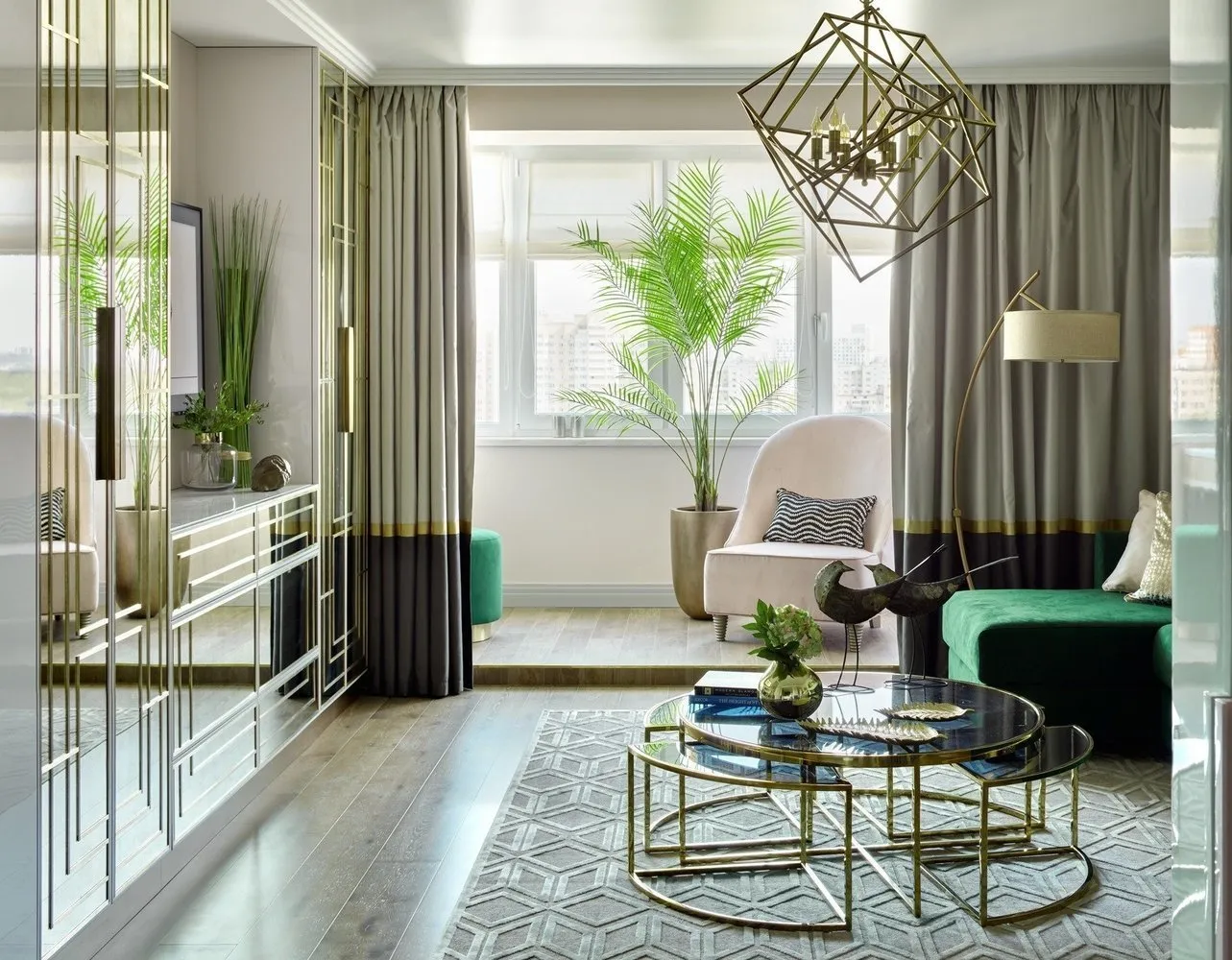 Designer: Elena Markina
Designer: Elena MarkinaOne of the most energy-efficient lighting solutions is LED bulbs (Light Emitting Diodes). Choose quality options to ensure longevity, and definitely recycle them after their lifespan ends (e.g., at IKEA).
Energy-saving systems such as smart homes, dimming lights based on intensity, and appliances with energy efficiency classes A, A+, A++ also help save electricity. Water conservation can be achieved by installing aerators on taps and using sensors for water delivery.
 Design: Elena Skutova
Design: Elena SkutovaLocal Production
According to the European Commission’s website, nearly a quarter of greenhouse gas emissions (CO2) in Europe come from transport. The rise in atmospheric CO2 is the main cause of air pollution in cities and one of the reasons for climate change happening on our planet.
A significant contribution to this comes from shipping goods. Therefore, choosing furniture and materials made in our region supports local production development and helps the environment—no need for thousands of kilometers of transport to reach our homes.
Moreover, it’s much easier now than before: the local furniture market is growing rapidly, and there are reputable companies making high-quality and attractive products. Some foreign furniture and material manufacturers, such as IKEA or Tarkett, have opened factories in Russia where they produce products for our market.
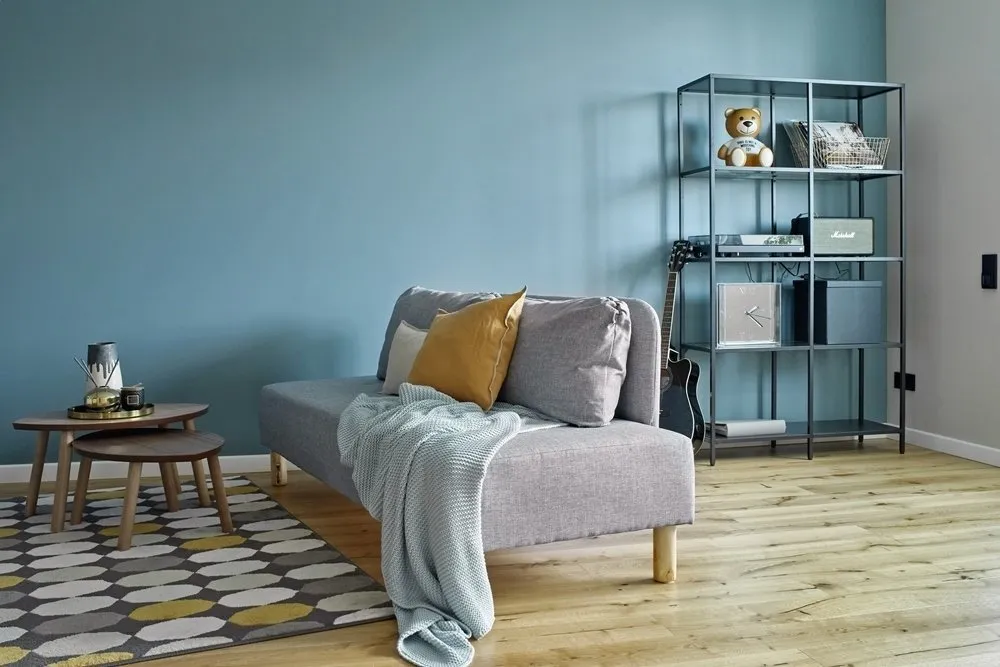 Design: Natalia Khudaya
Design: Natalia KhudayaDurability and Timeless Design
High-quality materials and furniture for our interiors will allow us to keep them unchanged for as long as possible, which positively affects both the environment and our budget. In this sense, design is also very important—it should meet all user needs and stylistically allow the space to remain relevant over time.
However, our tastes and habits change with time, so the space should be flexible, easily adaptable to our changing needs, and provide opportunities to update or modify parts of the interior without resorting to large-scale changes. For example, modular carpeting allows replacing just one damaged element instead of the entire floor covering. Color schemes expressed in textiles let you refresh an interior by simply replacing curtains, cushions, and upholstery.
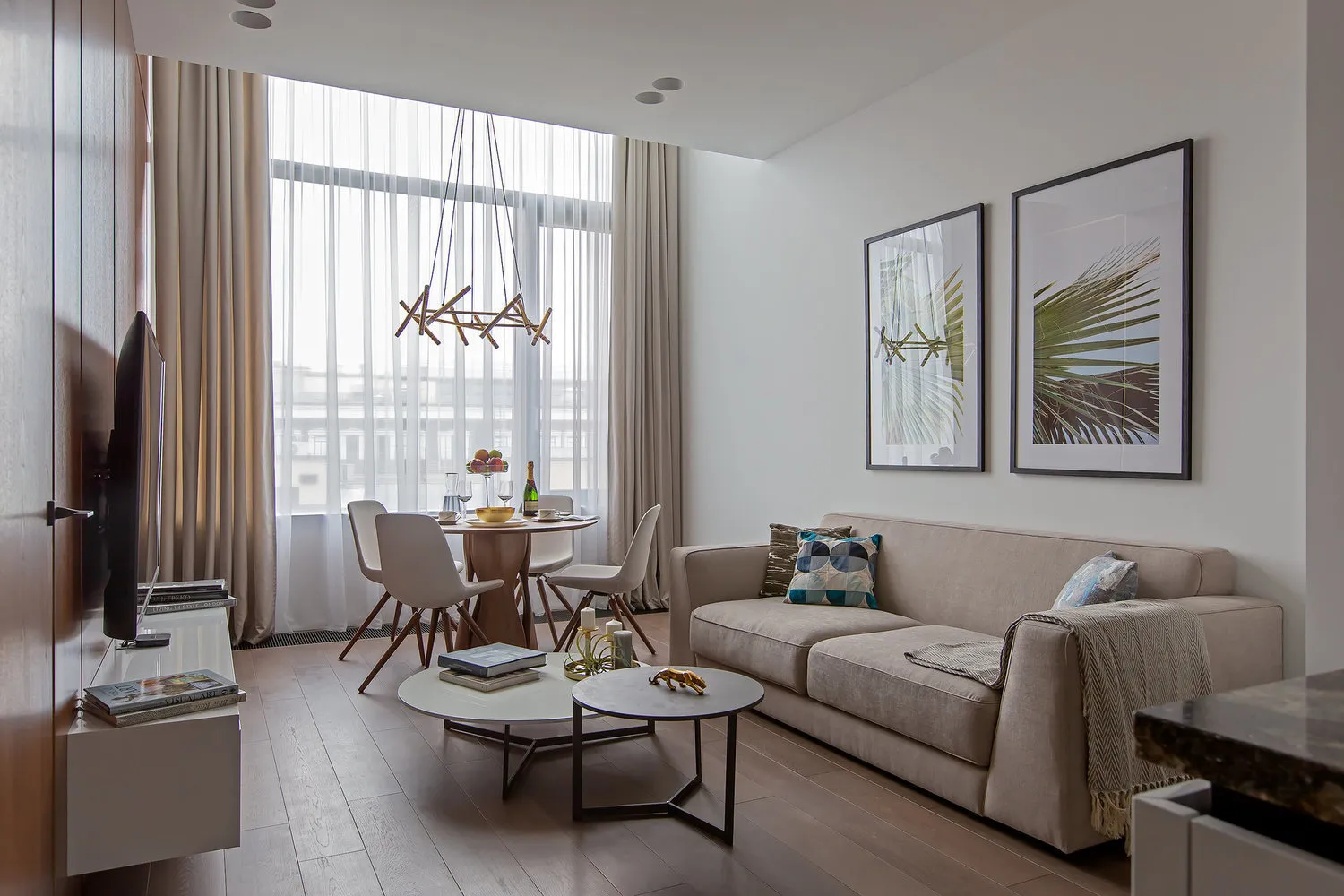 Design: Filipp Kitzenko
Design: Filipp KitzenkoMore articles:
 Expert Opinion: How to Choose Safe Materials for a Child's Room?
Expert Opinion: How to Choose Safe Materials for a Child's Room?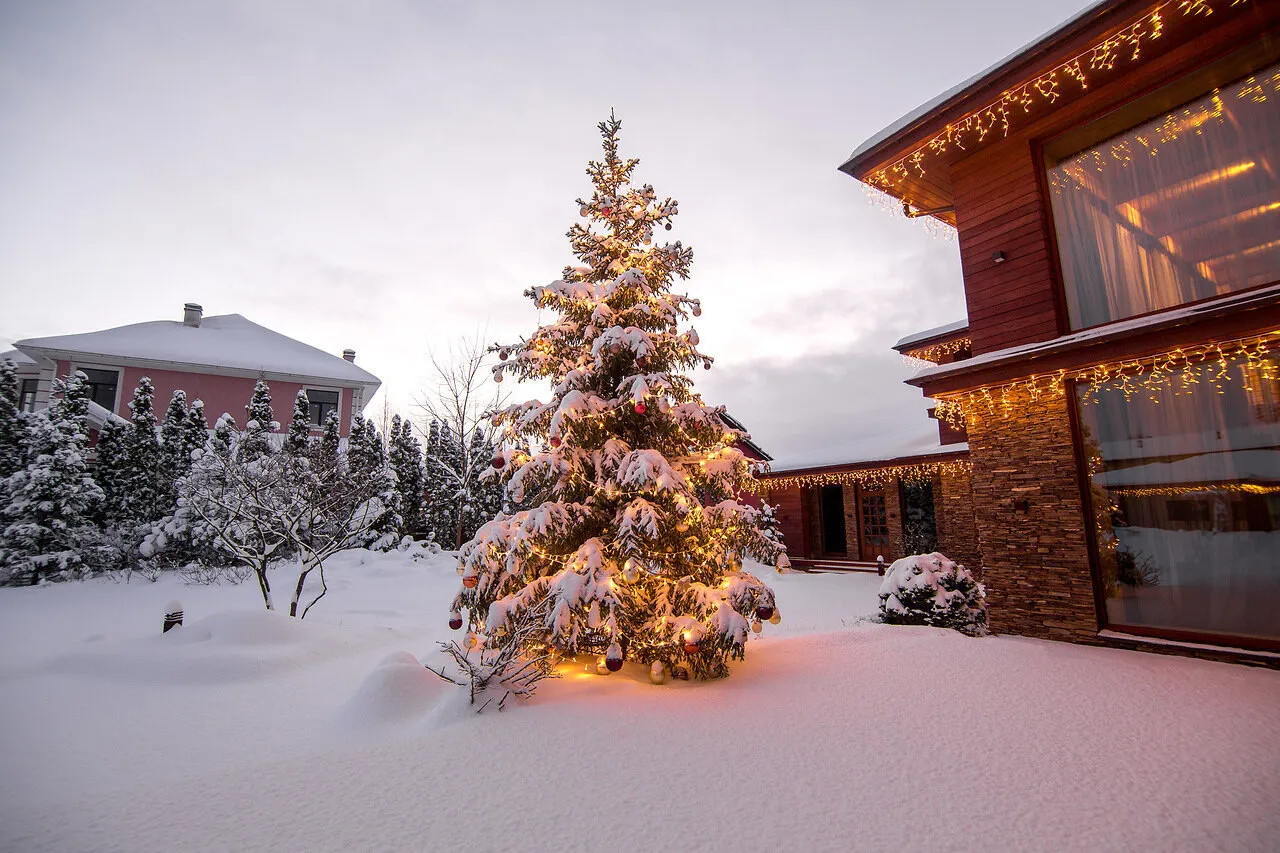 Frequently Asked Questions: How to Quickly Decorate a Garden Plot for New Year?
Frequently Asked Questions: How to Quickly Decorate a Garden Plot for New Year? What to Buy at IKEA While Discounts Are Active?
What to Buy at IKEA While Discounts Are Active?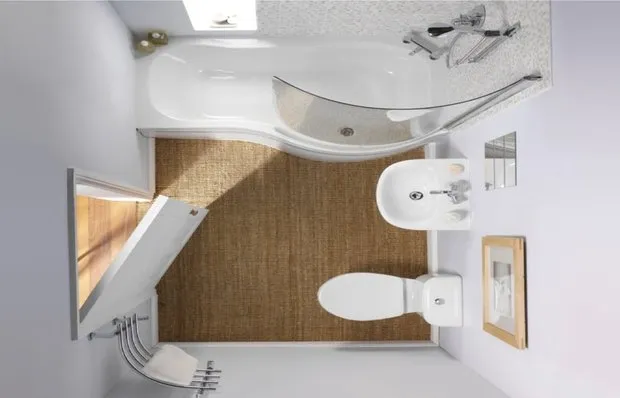 Apartment Repair: The Worst Solutions
Apartment Repair: The Worst Solutions 7 Bright Apartments You Will Love
7 Bright Apartments You Will Love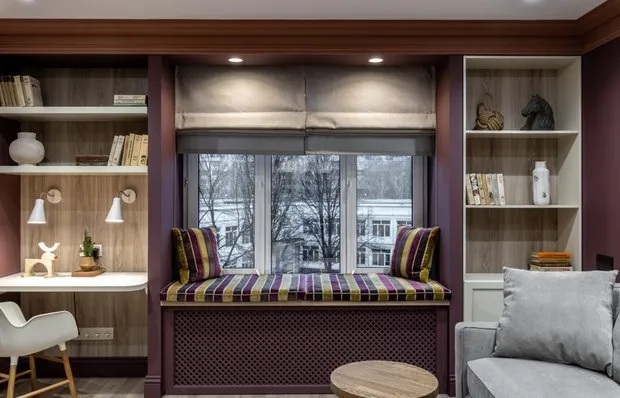 What a Designer of 'Flat Question' Did in 16 m²: Before and After
What a Designer of 'Flat Question' Did in 16 m²: Before and After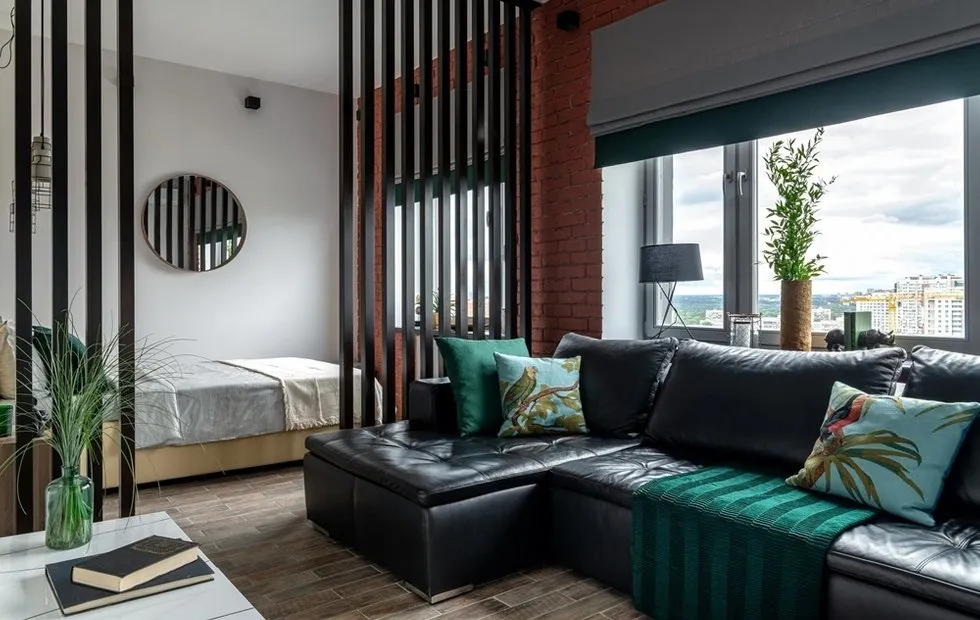 Reconfiguration of a Studio Apartment for Rent: How It Was Done
Reconfiguration of a Studio Apartment for Rent: How It Was Done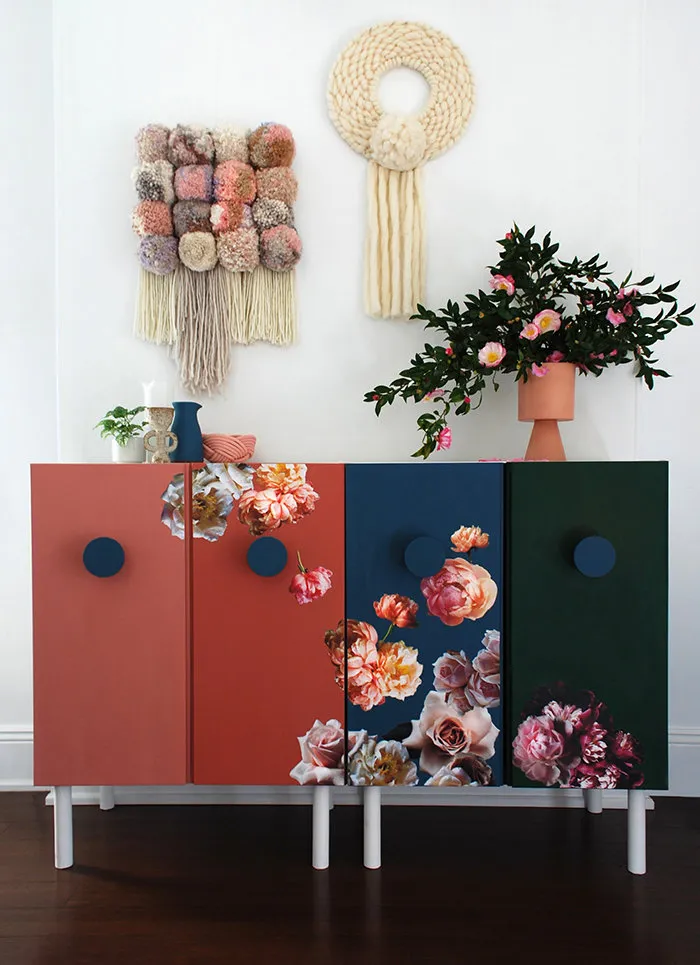 How to Transform a Boring IKEA Cabinet into a Stylish Commodity with DIY
How to Transform a Boring IKEA Cabinet into a Stylish Commodity with DIY